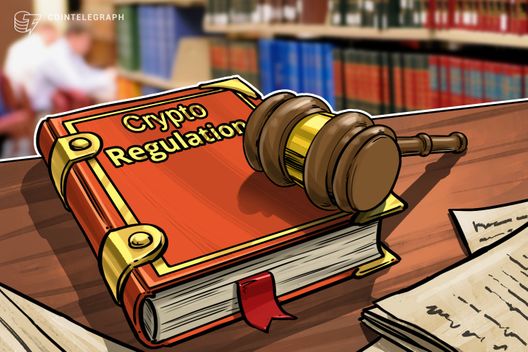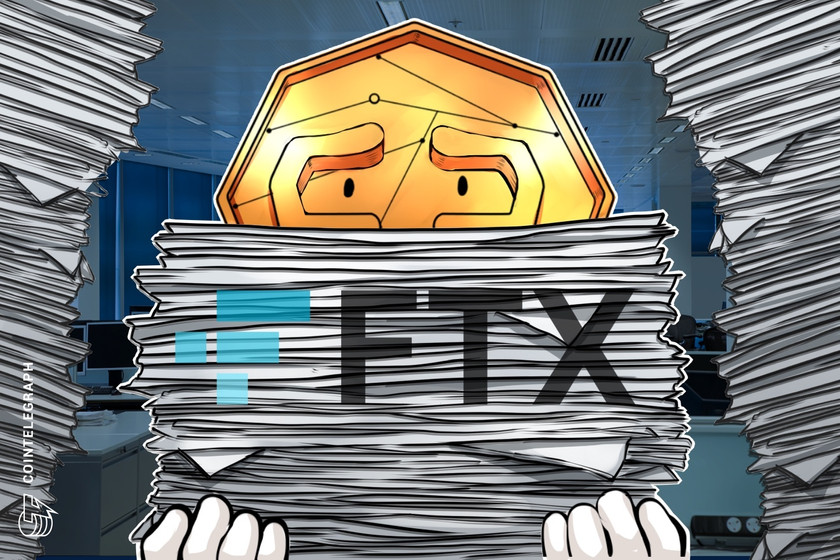On Jan. 25, United States (U.S.) President Donald Trump ended the partial government shutdown, albeit temporarily. As a result of the funding package he signed on Friday, the government will be open for three weeks.
While the future still seems unclear for U.S. government facilities, which are now returning to work after the 35-day standoff between Trump and the Senate, it is time to reassess how regulatory agencies like the Securities and Exchange Commission (SEC) and Commodity Futures Trading Commission (CFTC) were affected, and what that means for the crypto market.
Trump failed to get money for his border wall, shut down the U.S. government
The shutdown was triggered by Trump’s demand for $5.7 billion in federal funds for a U.S.-Mexico border wall, which he called for throughout his 2016 presidential campaign, making it one of his signature promises.
Initially, Trump claimed he would recoup the costs of the wall from Mexico, but President Enrique Pena Nieto refused to fund the construction. As a result, in January 2017, the Trump administration signed Executive Order 13767, which formally directed the U.S. government to build the wall using existing federal funding.
In December 2018, the Senate, which is controlled by the Republican party, unanimously passed an appropriations bill without wall funding. After that, Trump declared that he wouldn’t sign any funding bill that didn’t include money for the fortified border. According to Politico reports, Trump’s decision could have been influenced by conservative and far-right media outlets, which purportedly pressured the president to keep his longtime promise.
The House republicans then pushed a stopgap bill with funding for the wall by a 217-185 vote, but it also failed to find enough support in the Senate.
During what seems to be the highlight of the dispute preceding the shutdown, on Dec. 11, Trump met with Speaker-designate Nancy Pelosi and Senate Minority Leader Chuck Schumer and asked them to support an appropriation of $5.7 billion for funding of the border wall. After they rejected his proposal, Trump said, “I am proud to shut down the government for border security. […] I will be the one to shut it down. I’m not going to blame you for it. […] I will take the mantle. I will be the one to shut it down.” Ten days later, Trump took to Twitter to blame Democrats for the shutdown.
As a result, on Dec. 22, the shutdown started, as funding for numerous agencies, homeland security, law enforcement, tax collection and transportation expired. Approximately 800,000 federal workers were furloughed or were required to work without pay. The shutdown reportedly affected one quarter of the government. According to an analysis from Standard & Poor’s, by Jan.11, the shutdown had cost the U.S. economy $3.6 billion. Given that it lasted 14 more days and became the longest government shutdown in U.S. history, the overall effect could be even more significant.
The SEC was largely paralyzed, delaying the IPO applications and possibly triggering insider trading
On Dec. 27, the SEC announced that it will operate with reduced staff during the shutdown.
“Effective Thursday, Dec. 27 and until further notice, the agency will have a very limited number of staff members available,” the regulator announced via its website. The SEC added that it will keep essential staff to respond to emergency situations involving market integrity and investor protection.
Additionally, the regulator maintained operations for its offices of enforcement and investor complaints, as well as its Electronic Data Gathering, Analysis and Retrieval (EDGAR) system for company disclosures.
According to data from intelligence firm Enigma Technologies cited by Quartz, the SEC was operating at 5.8 percent of its normal capacity during the shutdown, with the enforcement division at 8 percent.
In a comment for Quartz, John Stark, the former chief of the SEC’s Office of Internet Enforcement, called the numbers “shocking” and predicted an increase in insider trading during the shutdown:
“There will absolutely be people on Wall Street, and off of Wall Street, who believe they may be able to get away with something because the cop is simply not on the beat.”
Moreover, Stark stressed that the SEC was underemployed even before the shutdown, which means that the lapse could have made it even more complicated for the watchdog to keep up with the market. It could take months to deal with the backlog, he argued, considering that SEC enforcement staff were allegedly not even permitted to read their emails. “Even if they wanted to work from home and get work done, it’s unlawful for them to do so,” the former SEC employee added.
Another former SEC employee, its ex-accountant/examiner Tim Dunn, told Quartz that the most “essential” SEC staff who remained on the job were of senior level. Therefore, they were unlikely to review cases, he argued.
“How far away are they from hands-on working these important cases, and are they working them? […] Somebody who is in senior management is probably six, eight, ten years removed from actually having done that work.”
The halt could have encouraged wrongdoing among market participants, according to James Cox, a securities law professor at Duke University, who was also interviewed by Quartz. Cox highlighted insider trading as one of primary examples of such offense, claiming that it accounts for 10 percent of all enforcement cases. He argued that the SEC was forced to handpick cases during the shutdown due to the lack of employees at work, which could have been abused by the market:
“That sends out a message to people on Wall Street — ‘Hey, maybe there’s less chance of me being caught right now,’ and that has all kinds of perverse incentives.”
On Jan. 27, 2019, after the shutdown was temporarily ended, the SEC issued transition guidance that explains how the staff will tackle the backlog of transactional and disclosure filings, as well as shareholder proposals that piled up during the shutdown.
According to the guidance, the staff will prioritize filings, submissions and requests for staff action, including shareholder proposals, in the order they were received. The papers also cautions that the SEC response times may be longer than usual.
The initial public offerings (IPO) market has taken a hit as a result of the shutdown, according to the transaction guidance. Specifically, the applications of companies seeking to go public in the first quarter of 2019 have been delayed. The list of such firms include China’s second-largest Bitcoin mining hardware manufacturer, Canaan, who turned to New York after its $400 million plans were lapsed by the Hong Kong Stock Exchange (HKEX).
The CFTC’s action was halted as well, pushing back its review of ETH and digital assets platforms’ applications
The CFTC, the agency that oversees the derivatives market and trading in Bitcoin futures, was largely shutdown as well. On Dec. 18, the agency released a memo announcing that it will “severely curtail” its operations. Only 9.1 percent of the CFTC’s staff remained at work during the shutdown, as per the statement.
Nevertheless, the regulator sought stay of actions against binary options and virtual currency fraudsters. On Dec. 26, it reportedly filed respective motions with federal courts.
One example of the cases that the CFTC wanted to keep investigating allegedly featured a number of companies that were accused of having solicited potential customers to buy illegal off-exchange binary options via companies such as Blue Bit Banc. The defendants reportedly aimed to cover up their misdemeanor by asking customers to transfer their binary options account balances into the ATM Coin (ATMC) cryptocurrency.
The shutdown could have also indefinitely prolonged the CFTC’s studies in regard to Ethereum (ETH).
On Dec. 11, the watchdog requested public comments and guidance on the Ethereum blockchain to better understand the differences and similarities between ETH and the seminal cryptocurrency Bitcoin (BTC). According to a Roll Coll report, while the comment submission period won’t expire until mid-February, there was no CFTC staff in office to begin undertaking the review.
Moreover, crypto exchange ErisX, which raised $27.5 million from major investors in December, was also affected by the shutdown. The platform requires approval from the CFTC, as it aims to accommodate the futures market, and hence its application was likely postponed.
Similarly, digital assets platform Bakkt, overseen by the Intercontinental Exchange (ICE), is likely to face another delay because of the major lapse. According to the company’s official notice, “following consultation with the Commodity Futures Trading Commission, ICE Futures U.S. Inc. expects to provide an updated launch timeline in early 2019 for the trading, clearing and warehousing” of Bakkt’s Bitcoin futures contract.
On Jan. 28, CFTC Chairman J. Christopher Giancarlo announced the agency’s return to operations. In the statement, however, he stressed that the CFTC “continued to perform essential market-critical functions throughout the shutdown.”
“The agency was well prepared, utilizing its Lapse in Appropriations action plan adopted a year ago. A small team of agency staff continued to monitor derivatives markets and ensured that essential enforcement activities were carried out.”
The shutdown might comeback, dealing even more damage
Despite all the consequences, Trump has reiterated his demands for the U.S.-Mexico wall funds, which is why he ended the shutdown on temporary terms. The Financial Times quotes him as saying:
“If we don’t get a fair deal from Congress, the government will either shut down on February 15 again, or I will use the power afforded to me under the laws and the constitution of the United States to address this emergency. We will have great security.”
Therefore, the impact on the crypto industry, namely its progress on Wall Street, could be postponed even further. Given that various Bitcoin ETF applications have been delayed numerous times by the SEC, and the regulator has to deal with major backlog caused by the shutdown on top of other tasks, crypto adoption could have been pushed back to a significant extent.








